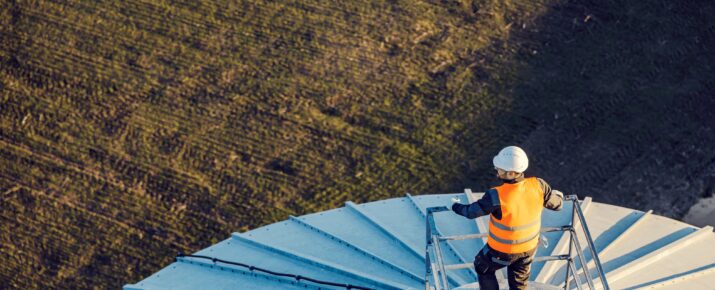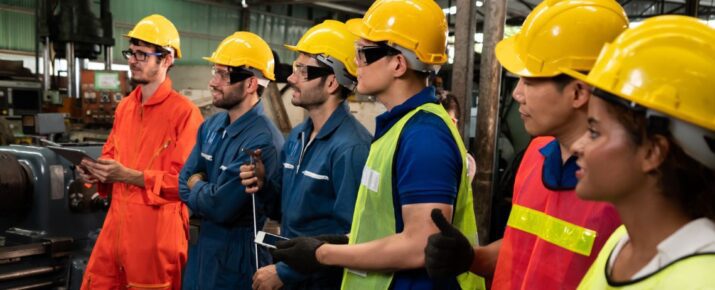Saving lives: amplifying AED awareness with SafetyCulture
Ask The Experts | By | 4 Apr 2025 | 5 minute read
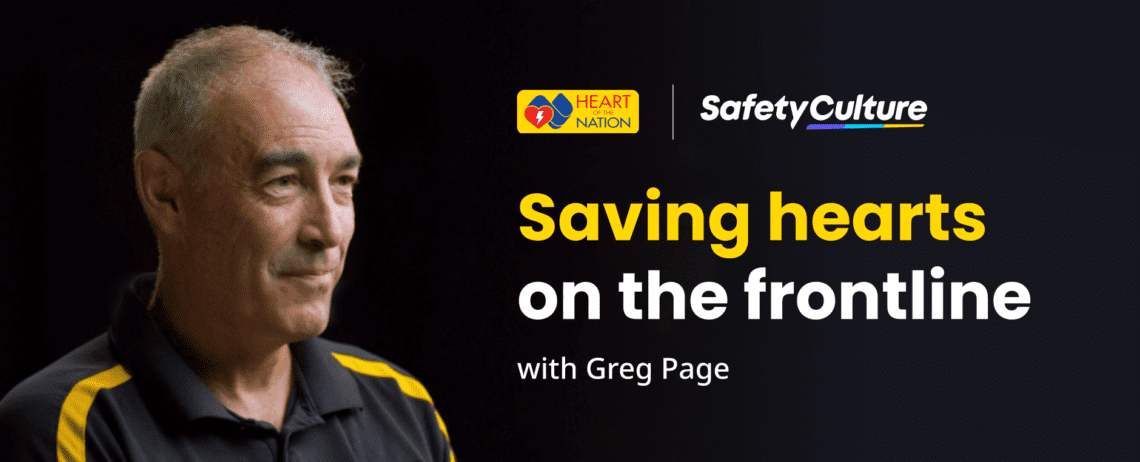
One minute, Greg Page was performing on stage; the next, he was fighting for his life. During a bushfire relief concert in 2020, the original Yellow Wiggle collapsed without warning – affected by sudden cardiac arrest (SCA). In those crucial seconds, his survival depended on immediate action.
Fortunately, there was an automated external defibrillator (AED) on site. Quick-thinking bystanders recognized the emergency, performed CPR, and used the AED to restart Greg’s heart. It was this immediate response that saved his life. Without rapid intervention, the outcome could have been tragically different.
Greg’s story is not unique. Every year, over 32,000 Australians suffer a sudden cardiac arrest, and less than 5% of those survive. The difference between life and death often comes down to one crucial factor: Rapid access to an AED, together with CPR, and people who know how to use it. This is especially important in Australian workplaces, where the risk of sudden cardiac arrest is a growing concern. Whether in a construction site, a warehouse, or an office, employees must be prepared to act quickly when lives are on the line.
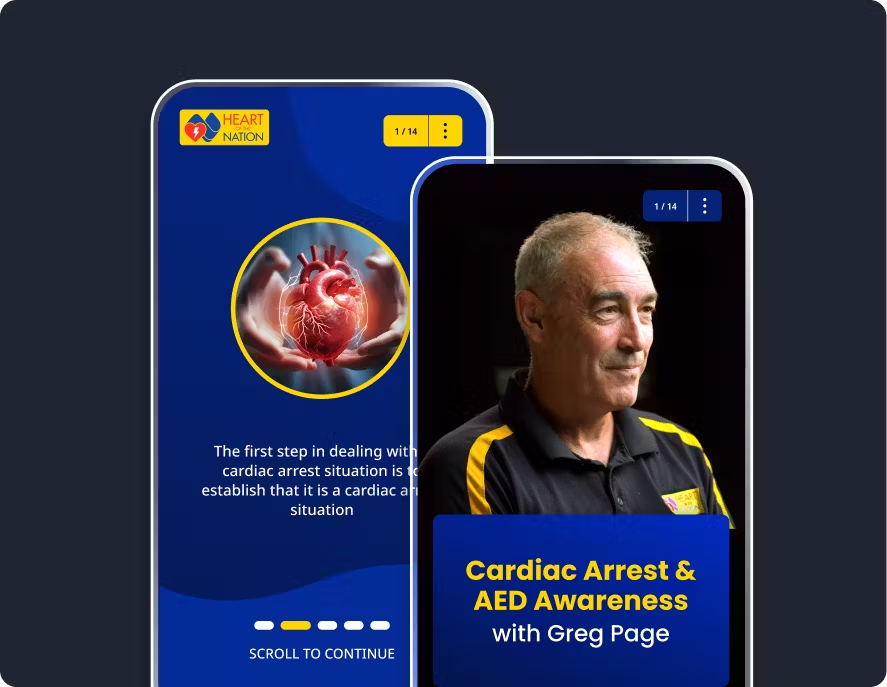
Your business has an important role to play
Having an AED on-site and ensuring staff are trained on how to use it can increase survival rates by up to 70%. And with new regulations in South Australia requiring businesses to have AEDs readily available, it’s a good time to act. Other states are expected to follow, making early compliance a proactive measure to protect both employees, contractors, and customers. By investing in AEDs now, your business can mitigate the risks posed by SCA and future-proof itself for new regulations.
But owning an AED is not enough. Ensuring all staff understand that no certification is required to use the AED is a key piece of education. Regular maintenance, staff training, and integration into workplace safety protocols are all essential to ensuring the device works when needed.
This is where we come in. The SafetyCulture platform makes it easier for businesses to track and manage AEDs with Assets, helping them comply with regulations and ensure they’re ready in emergencies.
Celebrating five years of Heart of the Nation
Founded by Greg Page after his near-fatal experience, Heart of the Nation is dedicated to increasing AED awareness and accessibility across Australia. In the past five years, the initiative’s relentless efforts have led to better AED accessibility and awareness across Australia. It’s no small feat, contributing to a better chance of survival for those affected by sudden cardiac arrest.
When someone’s heart suddenly stops, bystanders are that person’s best chance of survival. Even before paramedics arrive. I wouldn’t be here if it weren’t for the bystanders that knew how to do CPR, and having easy access to an AED.
– Greg Page, Founder & CEO, Heart of the Nation
This year marks Heart of the Nation’s fifth anniversary, a milestone in its life-saving mission. Heart of the Nation and SafetyCulture have come together to celebrate this achievement, expand life-saving education, and ensure businesses are equipped to act quickly when it matters most.
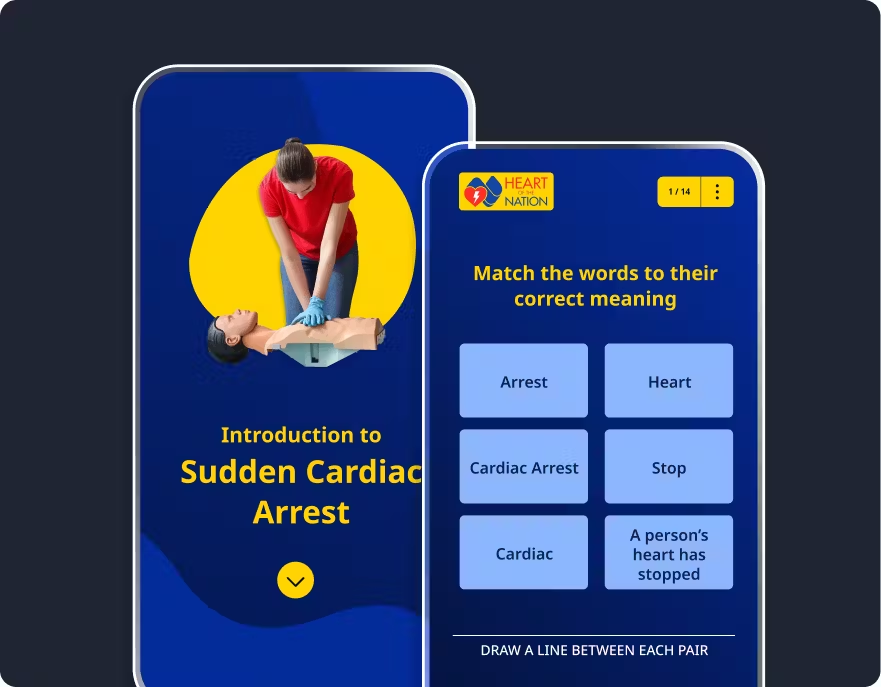
Simplifying AED compliance and preparedness with SafetyCulture
SafetyCulture was founded with a simple mission: to keep people in the workplace safe. Our organization was born out of a need for better workplace safety solutions, inspired by founder Luke Anear’s firsthand experience witnessing preventable workplace incidents.
What began as a digital checklist app, has now evolved into a comprehensive workplace operations platform used by frontline workers, leaders, and teams worldwide. Today, SafetyCulture provides businesses with essential tools designed to create safer, more efficient workplaces.
You can help save a life. Sign up for the free Heart of the Nation x SafetyCulture Cardiac Arrest and AED Awareness training.
How SafetyCulture ensures your business is AED-compliant:
- Track and maintain your AEDs: A broken AED is as useful as not having one at all. Keep track of AED maintenance using our Assets feature. By marking each device as an asset, this feature allows you to track all AEDs on site and ensure that each unit is inspected regularly.
- Perform inspections with ease: Use our Inspections feature to perform checks on each AED asset and ensure they’re in good working order. You can even set up automated reminders so you never miss an inspection, and your devices are ready to go when you need them most.
- Never miss a beat with Sensors: The sticky pads of an AED help to analyze the heart’s rhythm and deliver a shock, if necessary. These are single-use, which means they’ll need to be replaced after each patient (whether or not the AED has delivered a shock). You can connect your AEDs to our Sensors, which then alert you when a device may have been used and needs maintenance.
- Train your team anytime, anywhere: Enrol workers in the AED Awareness training to ensure everyone is ready to respond in an emergency. The platform offers accessible training, making it easy to equip your teams with the proper knowledge. Training employees in CPR and AED use could be the difference between life and death during a medical emergency.
- Keep lone workers safe: AED tracking can integrate with broader safety measures for employees working alone. In industries where workers may be isolated – whether working remotely or after hours – having an easily accessible AED on site can make all the difference.
The need for proactive compliance
With South Australia’s new regulation mandating AEDs in businesses, compliance is no longer optional. But rather than waiting for other states to follow suit, your business can be prepared for cardiac emergencies now. Including AEDs in your workplace safety plan – alongside first aid kits, fire extinguishers, and other safety equipment – will better ensure your employees’ health and safety.
Businesses that fail to comply with the new regulations may face significant penalties, including fines or reputational damage. By acting now to integrate AEDs into your workplace safety protocols, you not only reduce the risk of sudden cardiac arrest, but also position yourselves as leaders in workplace safety.
Become an Improvement Specialist and take your career to the next level. Enrol in SafetyCulture Certified today.
Take the first step towards saving a life
Don’t wait for regulations to catch up – prepare your workplace today with SafetyCulture’s tools and training.
- Sign up for the free AED awareness course: Equip your team with life-saving knowledge. This course provides essential training in CPR and AED use, giving your staff the confidence to respond to emergencies.
- Register your AED on the Heart of the Nation app: Help build a connected, safer community across Australia. Registering your AED, which works in all Australian states and territories, helps others know where these life-saving devices are located, improving access during an emergency.
- Streamline AED management with SafetyCulture: Track, inspect, and ensure your AEDs are ready when needed. The SafetyCulture platform ensures your AEDs are compliant and in working order.
Join the movement
As sudden cardiac arrest continues to affect thousands of Australians each year, it’s more important than ever for businesses to take proactive measures to safeguard their teams. Together with SafetyCulture and Heart of the Nation, we can make sudden cardiac arrest a survivable condition.
Want to learn more?
- Do the Cardiac Arrest and AED Awareness training
- Download the Heart of the Nation app
- Find an AED within Australia on this interactive map
- See the range of AEDs on SafetyCulture Marketplace
Important Notice
The information contained in this article is general in nature and you should consider whether the information is appropriate to your specific needs. Legal and other matters referred to in this article are based on our interpretation of laws existing at the time and should not be relied on in place of professional advice. We are not responsible for the content of any site owned by a third party that may be linked to this article. SafetyCulture disclaims all liability (except for any liability which by law cannot be excluded) for any error, inaccuracy, or omission from the information contained in this article, any site linked to this article, and any loss or damage suffered by any person directly or indirectly through relying on this information.
